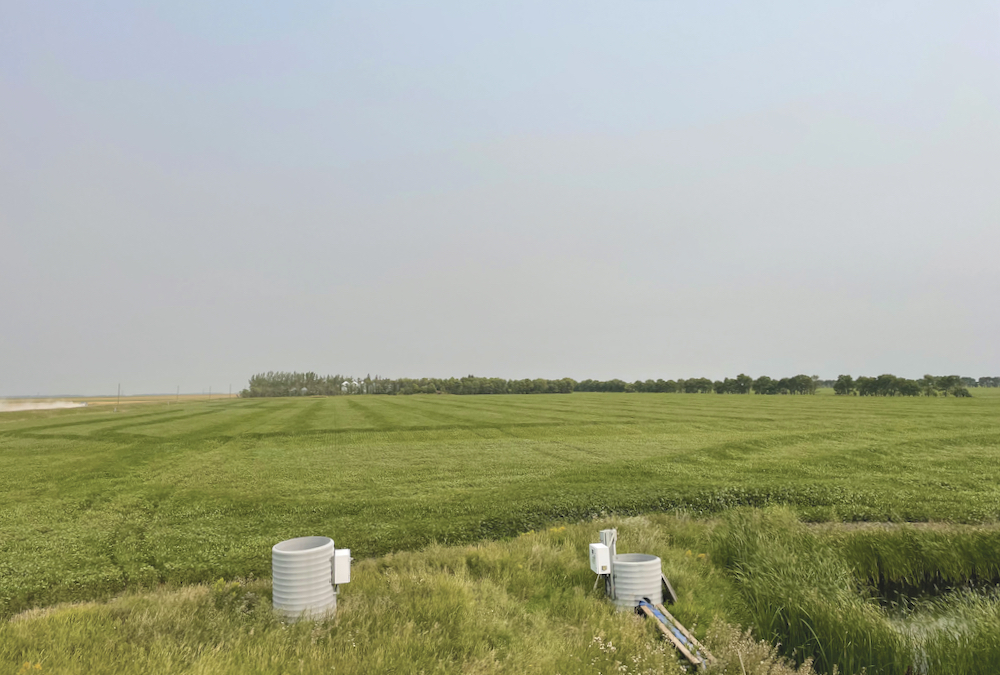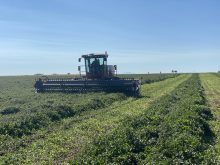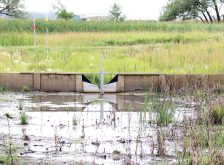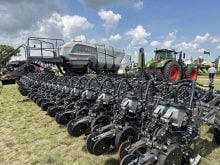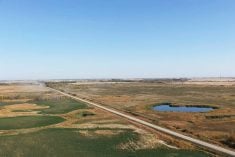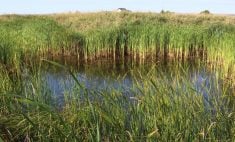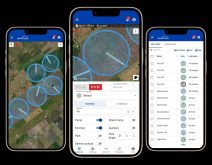To prepare for future drought, Prairie farmers could consider using large ponds with controlled drainage structures and tile drainage for a “much more deliberate water management approach,” says David Lobb, a professor of soil science at the University of Manitoba.
“It’s possible to hold water back and use it when we need it in a more deliberate and strategic way,” he says. “Farmers on the Prairies often have to juggle too much water in the spring and increasingly too little water during the growing season during periods of drought. There are limits, but we can do a better job to manage water with our crops if we make some investments in infrastructure.”
However, it’s not just the risk of increased drought incidence and severity that forces farmers to look at more sophisticated water management systems, says Lobb.
Read Also
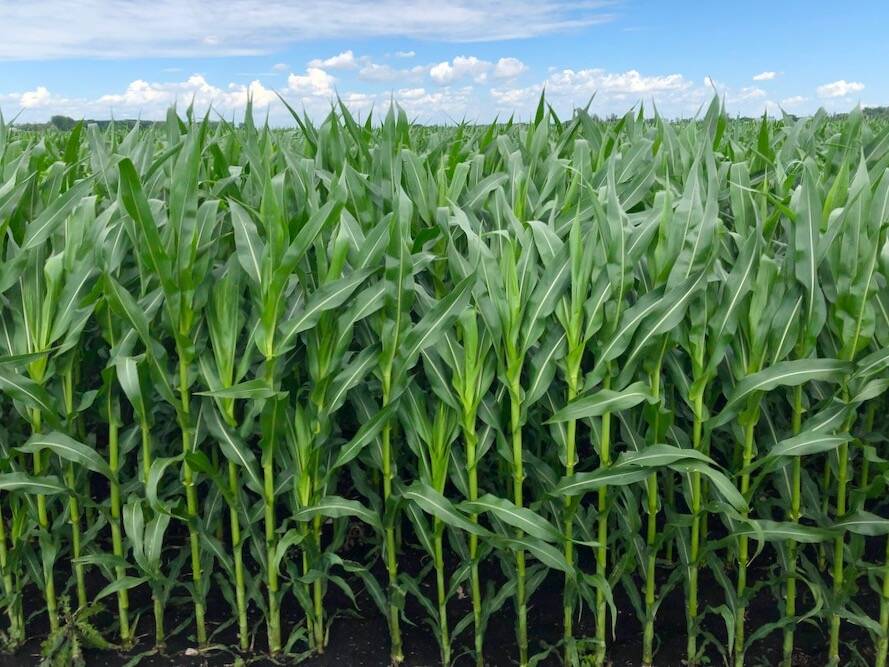
Cancer agency reclassifies another herbicide ‘probably carcinogenic’
The WHO’s cancer research agency has now put atrazine, a herbicide well known to corn growers, in the same potential-hazard category where the agency put glyphosate.
“Cropping practices and crop genetics have also changed so much, which also puts pressure on water availability. Farmers used to leave fields fallow for a year, and this would give them enough moisture for a good crop the year after instead of, usually, two poorer crop years. But, of course, they aren’t doing this as much anymore, so there is more stress on the system. The other thing that has changed is the nature of the crops. Wheat yields have increased two to three times in the last 40 years, which also increases the demand for moisture.”
The promotion of cover crops is also a concern.
“If you plant these, they are, of course, going to remove soil moisture, so you have to think about whether you can add an additional crop in the system with the crops you are already growing,” says Lobb. “I think this is why there is some reluctance to growing cover crops in some areas of the Prairies, like some parts of Saskatchewan where it’s semi-arid.”
Bigger scale and sophistication
It’s now common on farms across the Prairies and some parts of the United States to see controlled drainage structures, which serve an important purpose in the spring.
“These structures are very widespread now, used anywhere with a tile drain system,” he says. “It’s essentially a gate at the header tile that allows water to be held in the field as long as possible —until you need to seed.”
Oftentimes this water is drained — whether the farm has surface drainage or tile drainage — into ditches and/or into municipal drainage systems, and is lost to farmers.

Because regulations in some areas don’t allow drainage, and because farmers want stored water for their livestock and other on-farm uses, farmers have built retention ponds.
Use of these ponds by some farmers in the spring, however, already represents an increase in the sophistication of water management, says Lobb.
“You only need to have dry ground for about two weeks before you seed, so you can hold the water in the drains until that point, leaving the deeper soil levels moist,” he says. “This shows a more active view of water management than we’ve seen in times past.”
However, Lobb would like farmers to consider taking things further.
“I have been suggesting last year and this year the idea of having larger ponds and using the water in them more deliberately for crops later in the season — like Joel Classen and his family did last year,” Lobb says. “It’s a different scale and level of sophistication that can provide some solid benefits with soil moisture and a good return on investment.”
The Classen family owns CM Classen Farm and Northern Plains Drainage Systems in Elm Creek, Man., in the Red River Valley. More than 10 years ago, the family constructed a large reservoir of 30 acre-feet in partnership with the La Salle Redboine Conservation District so water from the tile drainage system could drain effectively, even when the municipal drainage system was at full capacity, which often occurred in the spring.
Drought: The mother of invention
In August 2021, with the drought in full swing, the Classens decided to pump water from their retention pond back into the fields through the drainage tiles to save some of their yields from disaster.
This is called backflood irrigation or subsurface irrigation.
It’s a practice that has been used for field crops that are tile drained in some parts of the United States — and in southern Ontario, says Lobb.
Joel Classen explains how he did it on his farm.
“We had some water in our reservoir and I’d done some research, and we just went ahead and tried it. We used most of the water in the reservoir and backflooded the whole system, which is about 160 acres. We don’t have a way of backflooding certain areas. It was all soybeans and we saw big results within 24 hours. The crop was wilting and under extreme stress.”
Lobb did some plant height measurements and while no one measured yield differences, Classen says pod counts were about double in the plants on top of tiles (and about four feet to either side) than plants farther away.
With 40-foot spacing of tiles, the irrigation only reached about 20 per cent of the field. Therefore, in the fall of 2021, Classen and his family added more tile.
“We now have 20-foot spacing and we’re ready to try backflooding again during the next drought with greater impact,” says Classen. “And we’ll do it sooner. From what I understand, we should have put water back in ahead of the drought stress getting so severe.”
Backflooding provides options
While backflooding of tile drains isn’t going to provide all of the moisture needed, to Lobb and Classen it still represents a powerful tool.
“Collecting all the excess from 100 acres and storing it in a large pond might only let you irrigate 20 acres, it’s nothing close to a 1:1 matching, but you can be selective in how you use the water, how much and in which fields,” Lobb says. “It gives you options and it gives you some peace of mind. I think awareness of the idea is growing.”
“There’s definitely been a lot of interest in what we have done, and we’ve had many discussions with other farmers about adding more tile drainage,” says Classen. “It boils down to whether it makes economic sense. Soil type is a factor and, of course, how many drought years you have going forward.”
Building a new water storage system and all of the infrastructure that would allow for controlled collection and backflooding to any or most of a farm’s field could cost up to $100,000.
“It may be worth it because it would make waterlogged land more productive and allow for irrigation by backflooding possible to get a better yield for crops such as corn, which demand more water. But most farm infrastructure change comes through cost-sharing programs, and if that isn’t present, it’s tough to make the investment by yourself,” says Lobb.
Although it takes planning and money, a backflooding system could pay off in the end. “I think the return on investment is very fast. It could be a few years depending on the yield bump,”says Lobb.
The success of tile drainage in Western Canada is well known, “and using it to do subsurface irrigation is one more way to get value out of it,” Classen adds.

